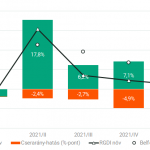NBER Working Paper No. 23343
Issued in April 2017
NBER Program(s): DAE EFG
Using annual data from the thirteenth century to the present, we show that improved long run economic performance has occurred primarily through a decline in the rate and frequency of shrinking, rather than through an increase in the rate of growing. Indeed, as economic performance has improved over time, the short run rate of growing has typically declined rather than increased. Most analysis of the process of economic development has hitherto focused on increasing the rate of growing. Here, we focus on understanding the forces making for a reduction in the rate of shrinking, drawing a distinction between proximate and ultimate factors. The main proximate factors considered are (1) structural change (2) technological change (3) demographic change and (4) the changing incidence of warfare. We conclude with a consideration of institutional change as the key ultimate factor behind the reduction in shrinking.
Nem található esemény a közeljövőben.
A KRTK Közgazdaság-tudományi Intézet teljesítményéről A KRTK KTI a RePEc/IDEAS rangsorában, amely a világ közgazdaság-tudományi tanszékeit és intézeteit rangsorolja publikációs teljesítményük alapján, a legjobb ... Read More »

Tisztelt Kollégák! Tudományos kutatóként, intézeti vezetőként egész életünkben a kutatói szabadság és felelősség elve vezetett bennünket. Meggyőződésünk, hogy a tudomány csak akkor érhet el ... Read More »

Srí Lanka: a 2022-es gazdasági válság leckéje – A. Krueger Lessons from Sri Lanka Anne O. Krueger Jul 25, 2022 – Project Syndicate ... Read More »

A permanens válság korában élünk – J. Meadway We’re living in an age of permanent crisis – let’s stop planning for a ‘return ... Read More »

A 2021 végén, illetve 2022 elején tapaszalt 6, illetve 7%-os cserearányromlás brutális reáljövedelem-kivonást jelentett a magyar gazdaságból. A külső egyensúly alakulásával foglalkozó elemzések többnyire ... Read More »
